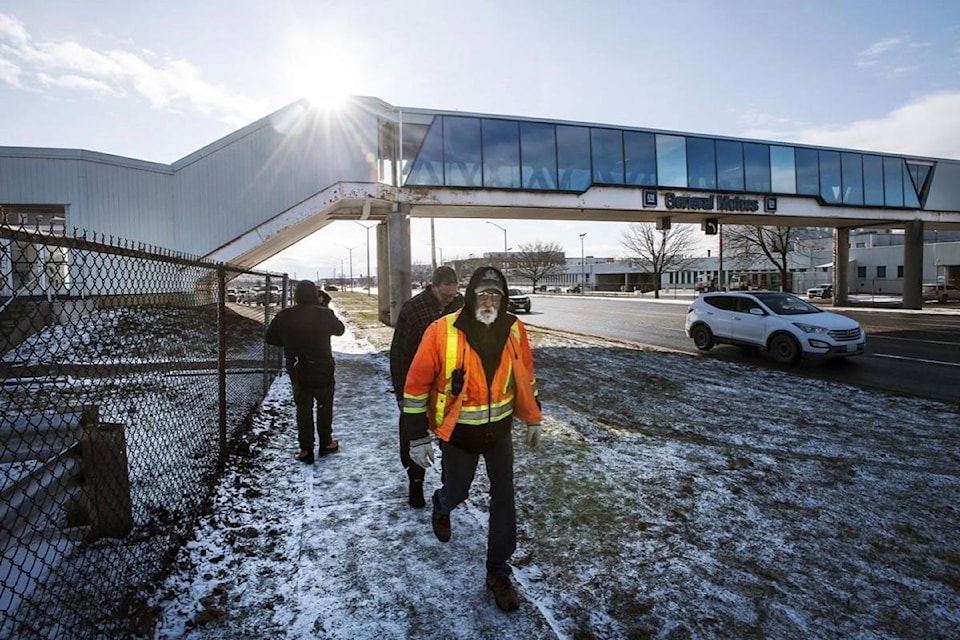While “unprecedented” has been the go-to term to describe the ripple effects of the COVID-19 pandemic, the wave of labour upheaval currently moving across the country is the latest turn in a familiar cycle.
Times of crisis have always been linked to labour unrest, says Dimitry Anastakis, who teaches business history at the University of Toronto’s department of history and Rotman School of Management. Labour activity followed both the First and Second World Wars as well as the Great Depression. Anastakis points out the largest strike in Canadian history — the Winnipeg General Strike of 1919 — came amid an influenza pandemic.
“There’s something real going on here,” he says.
As the pandemic has dragged on, workers from companies as diverse as Indigo Books and Music, the National Post, Vancouver’s Turning Point Brewing and Matchstick Coffee, and Ottawa’s Superette Wellington cannabis dispensary have joined unions this year.
Union leaders say these workers are part of a new generation of labour activists, using creative techniques to get their message out to both management and the general public against the backdrop of COVID-19’s economic upheaval.
Derek Johnstone, special assistant to the national president at United Food and Commercial Workers Canada, says the union has had more new members than usual this year.
“I think that COVID has had a really powerful impact on how service sector workers — how retail workers, how food manufacturing workers — see themselves,” Johnstone says. “It’s made it abundantly clear not only to themselves, but to the broader Canadian public, and hopefully, to politicians and large employers, that these jobs are important.”
Dollarama and Loblaw employees protested alongside union leaders, and unionized workers spoke out as the COVID-19 pandemic threatened job security for the airline and hotel industries, steel tradespeople and longshore workers.
UFCW initially wasn’t sure how limitations on gatherings would change its organizing efforts, but workers at Indigo were able to run an “inspiring” campaign through social media, Johnstone says.
“What’s really amazing is that sense of community that we normally see in an in-person meeting was actually manifesting itself on social media,” says Johnstone. “A key part of that campaign was folks being vocal on Facebook, having and planning digital meetings.”
One of the labour movement’s triumphs of 2020 was the revitalization of General Motors’ plant in Oshawa, Ont., during negotiations with Unifor.
Unifor president Jerry Dias notes that no one could have predicted the demand for trucks would spike because of a global pandemic, pushing GM to look once again to Oshawa.
“COVID has forced everyone to rethink the economy and forced everyone to prioritize … so, for the first time, we really saw a meshing of the minds. Governments have seemingly put the politics aside,” says Dias.
Dias says he sees the unionization rate rising in Canada, as Unifor has noticed renewed interest from workers at other automakers.
“Nobody expected that during a pandemic we’re going to bargain $5 billion worth of investments, and one of the strongest economic packages for workers that we’ve seen probably in 15 years,” says Dias.
“So now you’d have non-union workers that work for Honda, Toyota and in the auto parts sectors say, ‘Hey … what about me?’”
Tom Galivan, secretary-treasurer of Service Employees International Union Local 2, says his union also saw some breakthroughs this year. It gained workers in the retail industry, which has historically been difficult to organize due to high turnover, and at craft breweries, an industry that has changed rapidly from the days when a few big, unionized breweries dominated.
But Galivan says at his union, membership is still down this year, as the uneasy transition by regulators to digital systems slowed down the process of voting to unionize.
“Most workers in Canada fall under the jurisdiction of provincial labour relations legislation. It was very uneven province to province, how those labour boards responded,” says Galivan.
“In the case of Nova Scotia, for instance, there was a period of time in which the board there just didn’t process applications. So, workers didn’t have a pathway to unionize.”
Galivan says he expects workers and employers to be on a “collision course” set off by the pandemic — a tension he expects will define the next couple of years in the labour movement.
“There is a lot of pent-up frustration in a number of sectors where front-line workers have borne the brunt of the heavy lifting through the public health crisis. And that hasn’t been reflected in increased levels of compensation,” says Galivan.
“In fact, what we’re seeing is, because the economy is going through so many challenges … they’re now encountering employers that are looking for austerity.”
Anastakis notes that major challenges may lie ahead for labour organizers to keep the momentum from COVID-19 once a vaccine shifts the mood in workplaces, particularly with the rise of precarious “gig economy” work.
Daria Ivanochko, managing director of organizing and regional services at the Canadian Union of Public Employees, says she has not seen major membership growth in her union this year. But she says requests from workers have taken on a more urgent tone.
“I think the pandemic has really created a desire for a collective response in these uncertain times, and at its very core, that’s what trade unions are about,” says Ivanochko. “I see that as a big opportunity.”
This report by The Canadian Press was first published Dec. 23, 2020.
